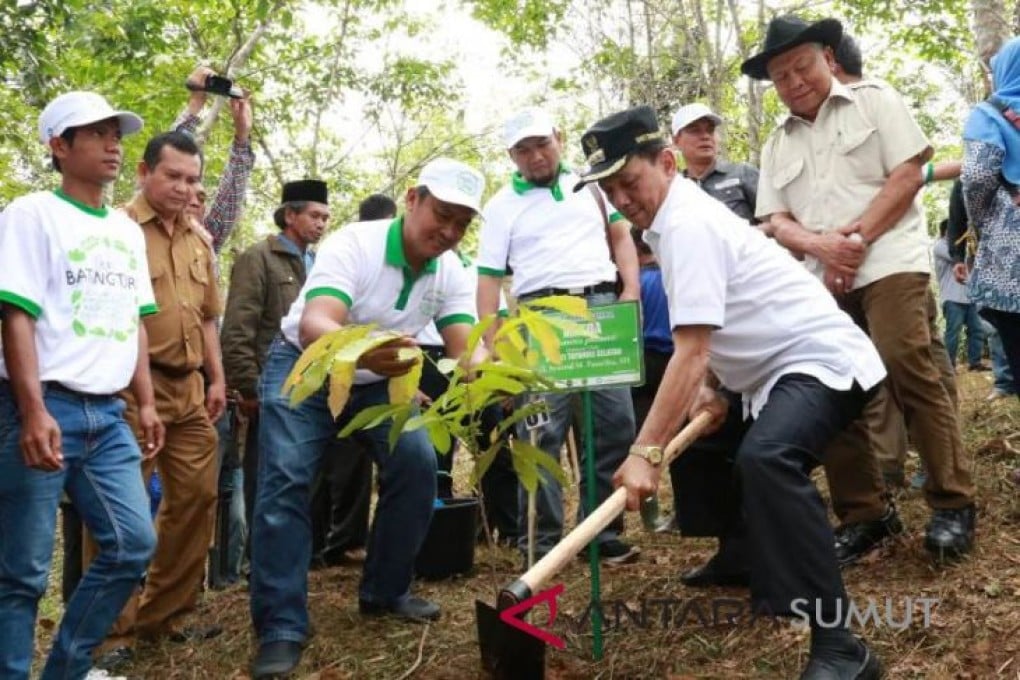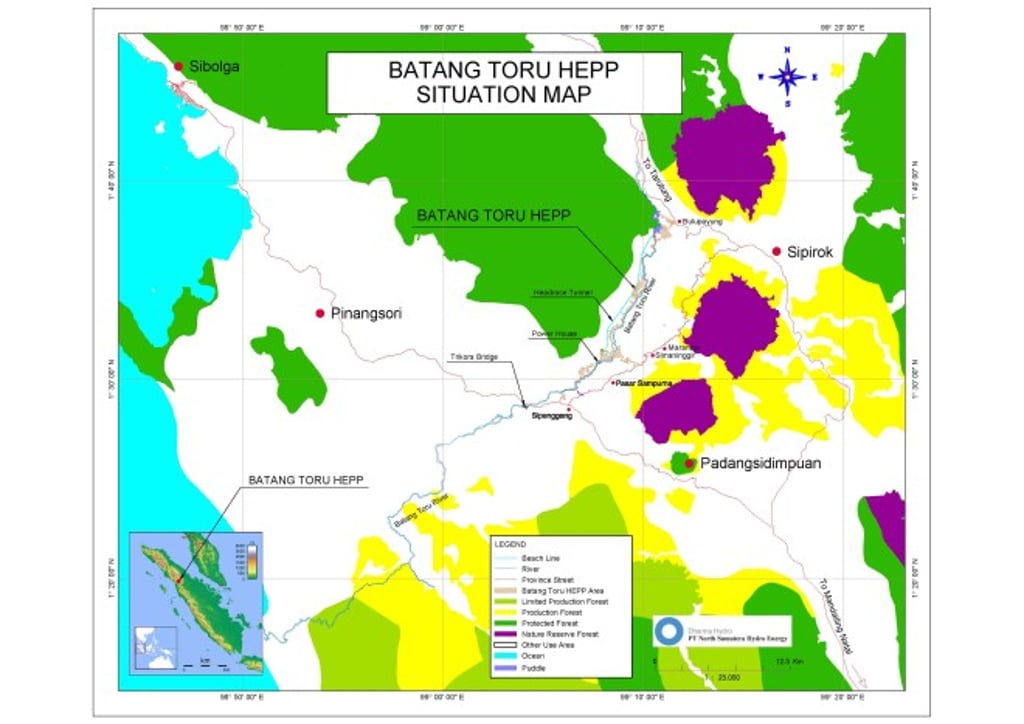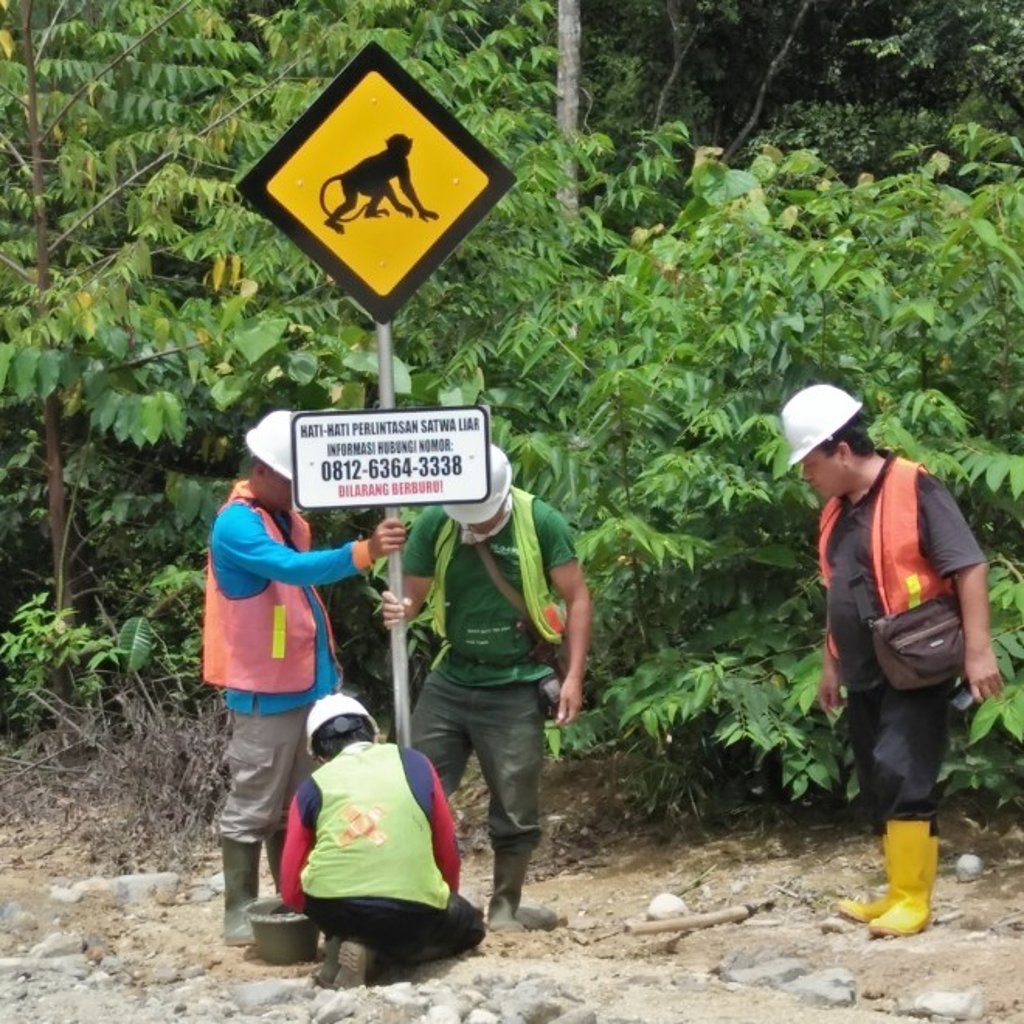What does a power plant have to do with climate change?

[Sponsored Article]
New hydroelectric power plants can play a crucial role in climate change mitigation. The Batang Toru Hydro Electric Power Plant (HEPP) in North Sumatera, Indonesia, which is being built by PT North Sumatera Hydro Energy (NSHE), is one such case.
The Batang Toru HEPP will contribute vitally to helping meet Indonesia’s climate change mitigation and adaptation plan.
Climate change is the biggest environmental challenge of our generation - our future depends on our ability to tackle it. The Paris Agreement of 2015 signalled an historic cooperation between the world’s nations to work together to tackle climate change. Indonesia is committed to be one of the leading nations delivering this commitment.
The Batang Toru power plant has a crucial role to play in meeting this ambition by replacing fossil-fuel energy with renewable, hydroelectricity. The Batang Toru power plant has a crucial role to play in meeting this ambition by replacing fossil-fuel energy with renewable, hydro-electricity. Based on a study by Pusaka Kalam, an independent research organization under the auspices of Bogor Agriculture Institute, the Batang Toru HEPP is set to contribute to the reduction of Indonesia’s carbon emission by as much as 1.6 million tons of carbon annually, or 4 percent of the national target from energy sector by 2030. Considering one large adult tree can absorb carbon at 260 pounds (130kg) per year, then 1.6 million tons is equivalent to carbon absorption from 12.3 million trees. If the land area per tree is assumed to be 10x10m or 100m2, then the land area of 12.3 million trees is 123 thousand hectares. This means that the Batang Toru HEPP has a carbon absorption equivalent of 12.4 million trees on an area of 120 thousand hectares.
By balancing green energy infrastructure development and protection of one of the third biggest tropical forests globally, we hope that the Batang Toru project will be an example to the rest of the world.
The project will not only be key a part of the 35,000 MW of Indonesian priority projects that form part of the electricity program, but will also be the biggest green energy plant in Indonesia.

KEY PROJECT FACTS
The Batang Toru Forest complex accounts for 162,000 Ha in total land area. The Batang Toru HEPP development project has been granted a 6,500 Ha Location Permit by the Local Government, for preliminary survey and exploration project design purposes. But the total construction area will only be 122 Ha, including 66 Ha of water inundated area. Once a survey has been carried out, and the exploration and project design has been completed, the remaining 6,500 Ha will be returned to the Local Government. In addition, to build the HEPP facilities, the company has bought 669 Ha of private land.
The Batang Toru HEPP is not located on the Great Sumatran Faultline, a major center for seismic activity. A series of studies have been commissioned by PT NSHE to assure the project will be safe. One of the studies for dam safety analysis was the Seismic Hazard Assessment for the Batang Toru Hydro Electric Power Plant, South Tapanuli, North Sumatra, which reported in March 2017. The parameters used in the assessment are in accordance with the standards from the International Commission on Large Dams /ICOLD (www.icold-cigb.org), the United States Bureau of Reclamations (USBR), and the US Army Corps of Engineers.
The Batang Toru HEPP employs run of the river technology. We have developed a water flow policy, to ensure the operation of Batang Toru HEPP will not harm local settlements in the down-stream area (Angkola Sangkunur Sub-district and Muara Batang Toru Sub-district). The Batang Toru HEPP will not cause flooding to the settlement area since it uses run of the river technology which requires much less water than a damn. The HEPP will use a daily pond that only requires an additional area of less than 1 square kilometre of inundation in addition to the existing 24 hectares water body of the Batang Toru river.The Batang Toru HEPP has fulfilled the requirements stated by the Indonesian Government and international standards, by implementing an environmental impact analysis known as AMDAL (national standard) which has been approved by the North Sumatera Provincial Government and the Environmental, Social and Health Impact Assessment (ESHIA - international standard). The Batang Toru HEPP is the first power plant in Indonesia that uses the ESHIA standard.

PROTECTING OUR NATIONAL HERITAGE
The habitat of the Tapanuli Orangutan is located mainly in the conservation forest area and in the protected forest area within the Batang Toru Forest complex, that totally accounts for 162,000 Ha (TFCA, 2018). Orangutans are part of our national heritage – it is our goal to protect them and their habitat. We have carefully chosen the site of the plant, to ensure it is not in the primary forest or in the protected area of the Orangutans. We are committed to avoid the separation of orangutan population habitats in the area, and to maintain its biodiversity. To ensure the continued protection of orangutan habitats we have taken the following measures:
- A collaboration with Balai Besar Konservasi Sumber Daya Alam/BBKSDA or the North Sumatera Natural Resources Conservation Agency, a regional government institution under the Directorate General of Natural Resources and Ecosystem Conservation, the Ministry of Environment and Forestry of Indonesia. Together we have constructed arboreal bridges to connect the left and right sides of the road, as well as the left and right sides of the river in several places, which have been identified as animal crossings. Our partnership with BBKSDA is exploring additional technology and other solutions to protect the Orangutans.
- We are committed to protecting wild animals, including Orangutans, through a daily wildlife monitoring program. The wildlife monitoring program has been carried out by a collaborative monitoring team, consisting of PT NSHE, BBKSDA, local Non-Government Organizations including LSLI (Lembaga Sipirok Lestari), Wanseb (Wahana Komunikasi Konservasi Ekosistem Batang Toru), Ovata Indonesia, LCI (Ladon Club Indonesia), and the local community. Monitoring activities are intended to monitor the presence of wild animals, ensure employees' compliance with company policies and to take rescue action if needed. So far, no wild animals have been injured due to project activities. The monitoring team has succeeded in identifying wild animal habitats around the project site, identifying places that are suspected as animal crossings, identifying species of animal feed trees, identifying the types of animal feed trees, and helping animals, plant species and their feed to move from places that are close to construction activity.
COMMUNITY BENEFITS
The project will create many jobs for the local community surrounding the Batang Toru HEPP. The construction of the 510 MW electricity plant will also build public facilities, including health and education facilities.
However, this project is not without hurdles to overcome. Through our commitments and careful management, we hope to deliver sustainable energy for the local population, protect our national heritage, and contribute to the climate change mitigation and adaptation program. The Batang Toru HEPP is important to Sumatera, Indonesia and the world.***